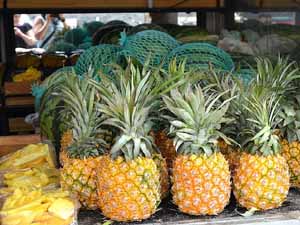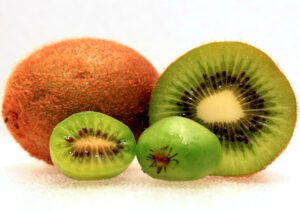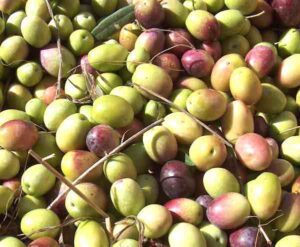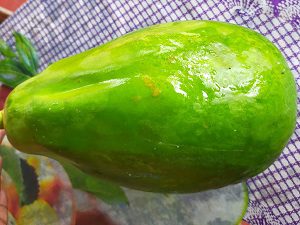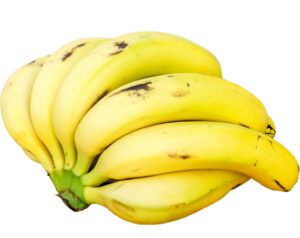Commercial plum farming is a very easy and profitable business in many countries around the world. Growing plum tree is very easy and it’s very easy to make good profits from this business. A plum is actually a fruit of some species in Prunus subg. Prunus. Fully mature plum fruits may have a dusty-white waxy coating that gives them a glaucous appearance. This dusty-white waxy coating is an epicuticular wax coating and is known as ‘wax bloom’. Dried plums are generally called prunes (which have a dark, wrinkled appearance).
Plums may have been one of the first fruits domesticated by humans. 3 of the most abundantly cultivated species of the plums are not found in the wild. Plum remains have been found in Neolithic age archaeological sites along with olives, grapes and figs. According to Ken Albala, plums originated in Iran. They were brought to Britain from Asia.[1]
Plum fruits are usually of medium size (between 0.79 and 2.76), globose to oval. The flesh of the plum fruits is firm and juicy. Peel of the fruit is smooth, with a natural waxy surface that adheres to the flesh. Plum fruit is a drupe, meaning it’s fleshy fruit surrounds a single hard fruit stone which encloses the fruit’s seed. Global production of plums was 12.6 million tones in the year of 2019, led by China with 56% of the world total. Romania and Serbia were secondary producers.
Uses of Plum
Plums are mainly used as food. Raw fruits are 1% protein, less than 1% fat, 11% carbohydrates and 87% water. A 100 gram raw plum serving provide 46 kilo calories of food energy and are a moderate source of vitamin C, with no other micro-nutrients in significant content.
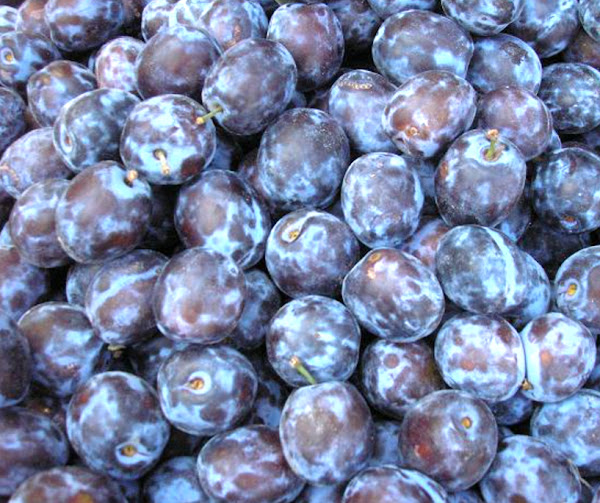
Advantages of Plum Farming Business
Like many other commercial fruit farming business, large scale plum farming business is very profitable, and many people are already doing this business for making money.
Commercial plum farming is a very common and popular business in many countries for making profits. However, here we are trying to describe more about the top advantages of plum farming business.
- Starting plum farming business commercially is very easy and simple, even the beginners can start this business easily.
- Growing and caring the plum plants is very easy and simple. The plants are very strong and grow without much problem.
- Plum farming is a traditional business in many countries around the world.
- Many people are already doing this business for making money. So, you don’t have to worry much about starting and operating this business.
- You can start this business easily even if you are a beginner. Although, we recommend having practical training before starting this business commercially.
- Commercial production of plum is very profitable. So, you will be able to make good profits from this business.
- Capital and labor requirement for caring plum plants is relatively less as compared to many other crop farming business. But the returns from this business is much higher.
- Right now both demand and value of plum is good in the market. And the demand is increasing gradually.
- As both demand and value in the market are good, so you don’t have to worry much about marketing your products.
- Caring the plum plant is relatively easy and simple. Anyone can care the plants without much knowledge.
- You can start this business either commercially or in small scale for making profits.
- As we have mentioned above, commercial plum farming is a profitable business, so it can be a great employment source for the people (especially for the educated but unemployed people.
- Plum is a nutritious fruit, and you can enjoy this fruit if you start your own production.
How to Start Plum Farming?
Starting commercial plum farming is very easy and simple. You can start this business easily even if you are a beginner. But, we recommend having practical training or knowledge from existing farmers if you are a beginner. Here we are trying to describe more information about starting and operating a successful plum farming business.
Site Selection
First of all, you have to select a suitable land for your plum farming business. Generally, plum plants can grow well in a wide variety of soil types. They can grow in deep fertile or loamy land with good drainage system. The plants generally grow well in pH range between 5.5 and 6.5. Clear hard pan, water logging as well as extreme salts from the soil before planting.
Prepare the Soil
Do ploughing, cross ploughing of land and then level it. Try to prepare the land in such a way so that water stagnation should not occurred in the field. Try to add as much organic contents as you can while preparing the soil.
Climate Requirement For Plum Farming
Plums generally require more cooling than peach and almond fruit. Plums are generally grown in the mid and low hill regions. Cool winters and warm summers are best suited for plum farming business.
Choose a Variety
There are numerous plum varieties available to choose from. You can choose any variety depending on it’s growing capability and production in your area. You can consult with some existing farmers in your area for having better recommendations.
Propagation
Plum plants can be propagated successfully on wild apricot, peach and plum rootstocks. Peach rootstock is recommended for light soils. Apricot rootstocks or plum kabul green gage cuttings are recommended. Rooted cuttings of Kala Amritsari can be used directly without budding.
Purchase Seedlings
You can purchase plum plants directly from the nurseries if you want to avoid the propagation process. These plants are easily available in many nurseries. You can search your local nurseries for plum seedlings.
Planting
The plum plants can be planted in the main field after the scion has grown for 1 year during the winter season. Keep 6×6 meter spacing from row to row and also from plant to plant. This will accommodate around 275 trees per hectare.
Caring
The plum trees are very strong and hardy, and they generally require less caring and other management. Although, taking additional caring will help the plants to grow well and produce more. Here we are trying to describe the common caring process of the plum plants.
Fertilizing: Apply FYM at the rate of 6-12 kg per tree when they are 1-2 years old, UREA at the rate of 60-120 grams per tree, SSP at the rate of 95-120 grams per tree and MOP at the rate of 60-120 grams per tree. Apply FYM at the rate of 18-24 kg per tree when they are 3-4 years old, UREA at the rate of 180-240 grams per tree, SSP at the rate of 95-120 grams per tree and MOP at the rate of 180-240 grams per tree. Apply FYM at the rate of 30-36 kg per tree when they are 5 years old, UREA at the rate of 300-360 grams per tree, SSP at the rate of 475-570 grams per tree and MOP at the rate of 300-360 grams per tree.
Watering/Irrigation: Regular, timely and adequate irrigation is very necessary for commercial plum farming. Plums are irregular rooted as well as rapid maturing, so they require adequate moisture throughout the developing period. Exact time period of irrigation actually depends on numerous factors like soil variety, weather and as well as the type of major fruit trees. Apply regular irrigation at per week timeframe in April, May and as well as June. Any irrigation is hardly provided at complete blossom phase and ripening phase to prevent flower.
Controlling Weeds: Weeds are very harmful for plants. They consume nutrients and the main plants suffer. So controlling weeds is very important. Manual controlling is always best for keeping the weeds in control. Recommendation of Diuron with terbacil 1.2 kg per acre or Simazine 1.6 kg per acre is done pre-emergence. Apply glyphosate at the rate of 320 ml per acre in post emergence for controlling weeds.
Mulching: Mulching helps to retain moisture into the soil, and at the same it helps to prevent the growth of weeds. Try to use organic materials as mulch.
Intercropping: Leguminous crops like black gram, cluster bean, pea, green gram can be cultivated as intercrops, during the non-bearing fruit period of the plants.
Pruning & Training: Plum trees should be trained according to open center depending upon growth habit of the varieties. Many types of the Japanese group having a spreading habit are better adapted to open center of training, whereas upright growing plum plants should be trained to modified leader system. The leader branches should be modified and 4-5 well spaced secondary branches should be obtained after 4 years of planting.
Fruit Thinning: Fruit thinning should be done by hand before the pit hardening stage and fruits should be spaced 5-8 cm apart.
Pests & Diseases
Like many other fruits, the plum fruits are also susceptible to some common pests and diseases. Here are trying to shortly describe the top pests and diseases of the plums.
Black Knot Disease: Smoky black knots on twigs and limbs, which range in size from 1 to 30 cm. Try to plant resistant cultivars for controlling this disease. Prune off galls, make sure to cut at least 10 cm below swellings.
Brown Rot: In this disease, the fruits have brown powdery masses. Fruits shrivel and form ‘mummies’. Keep the trees well pruned to encourage air circulation. Remove and destroy dropped fruit. Spray with sulfur at pre-blossom stage repeat when shucks split, then weekly for 2 week.
Leaf-Curl Plum Aphids: Leaves and young shoots of the plums are twisted and stunted. Tiny sticky insects are present. Carefully and timed sprays of horticultural oil will kill these aphids as they hatch. You can also apply neem when aphids are seen on leaves.
Plum Curculios: Small crescent shaped scars on fruits can be seen, which drop easily. Pick up felled fruits frequently. Once petals start to fall, each day spread a sheet below the tree and hit the tree trunk with a padded stick; collect and destroy the curculios that fall onto the sheet. Continue for 3 week.
Harvesting
Exact time of maturity of plums varies depending upon different types and varieties. Ripe plums are used in several picking and are packed with proper care.
Plum needs to be packed properly and are stored in proper temperature as they are chilling sensitive, due to highly perishable character of plum.
Yield
Actually, it’s very tough to tell the exact amount. Total production or yield depends on numerous factors. On average, you can expect yield of up to 40 kg per tree.
Marketing
Marketing plum is very easy and simple. You can target your local market, or any of your nearest town for selling your products.
These are the common steps and ways for starting and operating a successful plum farming business. Hope this guide has helped you! Good luck and many God bless you!

